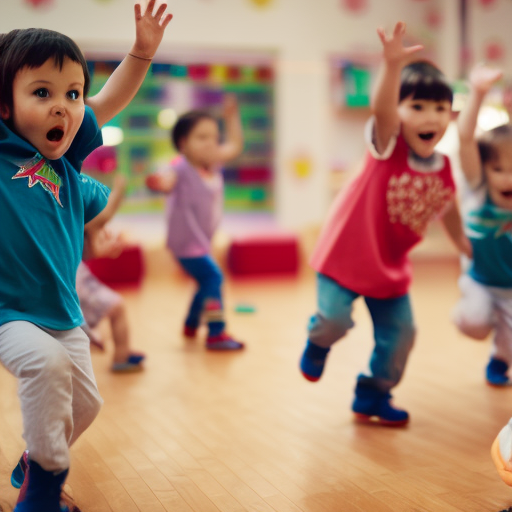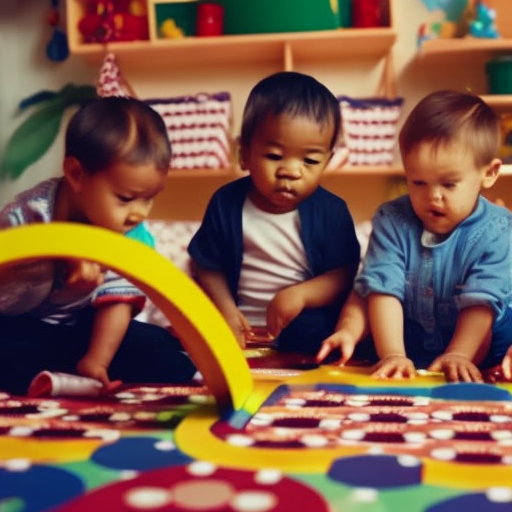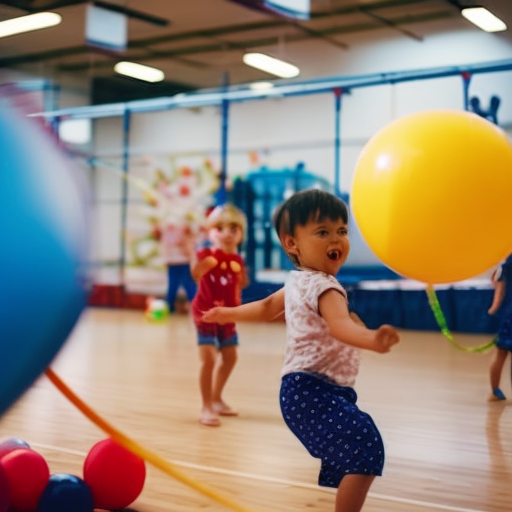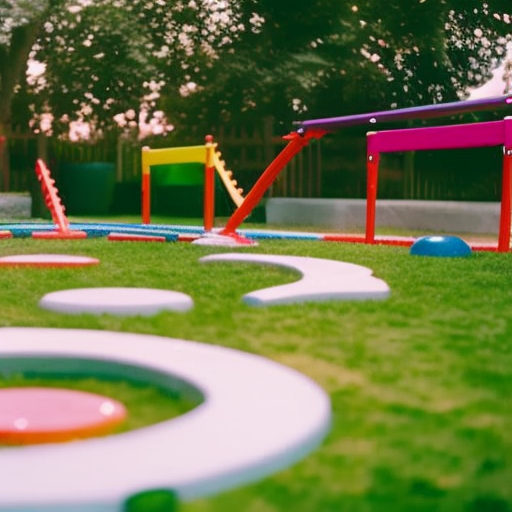"Cherishing Little Steps - A Haven for Baby and Family Journeys"
Indoor Games for Preschoolers
Imagine a group of preschoolers gathered in a room, their energy bubbling like a pot of boiling water. They are like little tornadoes, whirling around with boundless enthusiasm. As an adult, it’s your job to channel that energy into something productive and fun.
But where do you start? How do you keep them engaged and entertained without resorting to the same old tired activities?
In this discussion, we will explore a variety of indoor games specifically designed for preschoolers. These games will not only keep them entertained but also help develop their cognitive, social, and physical skills.
So, buckle up and get ready to embark on a journey of imagination and discovery with these exciting indoor games for preschoolers.
Key Takeaways
- Indoor games for preschoolers enhance problem-solving skills.
- These games foster creativity and imagination.
- They promote teamwork and collaboration.
- Indoor games provide a fun and engaging activity for preschoolers while boosting their cognitive development, motor skills, coordination, and social interaction.
Musical Chairs

Get ready for some musical fun with your preschoolers as they play the classic game of Musical Chairs! This is one of the most beloved and exciting preschooler friendly music games. Not only does it get the little ones moving and grooving, but it also helps them develop their listening skills and coordination.
To play Musical Chairs, you’ll need a few chairs and some lively music. Arrange the chairs in a circle, facing outward. Make sure there’s one less chair than the number of children playing. Start the music and have the children walk or dance around the chairs. When the music stops, they must quickly find a chair to sit on. The catch is that there’s always one chair less than the number of children, so someone will be left standing. That person is out of the game. Remove one chair and start the music again. Repeat this process until there’s only one child left sitting in the chair – the winner!
Musical Chairs is a fantastic active indoor game for young children. It keeps them engaged, active, and entertained. Plus, it’s a great way to introduce them to the concept of taking turns and following directions.
Simon Says

Now let’s move on to another exciting game that will have your preschoolers giggling and following directions – it’s time to play Simon Says!
This classic game not only provides endless fun but also encourages physical activity. Here are four reasons why Simon Says is the perfect game for your little ones:
-
Active listening: Simon Says requires children to pay close attention to the instructions given by the leader. They must listen carefully and follow the directions only when the phrase ‘Simon says’ is used. This helps develop their listening skills and enhances their ability to follow instructions.
-
Gross motor skills: In Simon Says, kids are prompted to perform various actions such as jumping, clapping, and hopping. These movements help improve their coordination, balance, and overall physical development.
-
Social interaction: This game promotes social interaction as children take turns being the leader. They learn to wait patiently for their turn, follow each other’s actions, and engage in friendly competition.
-
Cognitive development: Simon Says also challenges children’s cognitive abilities. They need to quickly process the instructions, remember the actions, and respond accordingly. This boosts their memory, concentration, and problem-solving skills.
Puzzles and Brain Teasers

Engage your preschoolers’ minds and challenge their problem-solving skills with a variety of puzzles and brain teasers. These activities aren’t only fun but also help develop critical thinking, concentration, and vocabulary skills.
Word search puzzles are a great way to introduce your little ones to letters and words. Create simple word searches using large print and familiar words like their names or favorite animals. Watch their excitement as they search for the hidden words and celebrate their success.
Riddles are another fantastic brain teaser for preschoolers. These clever and playful puzzles encourage them to think outside the box and use their imaginations. Start with easy riddles that involve familiar objects or animals. For example, ask them, ‘What has a bark but doesn’t bite?’ The answer, of course, is a tree!
As they become more confident, you can gradually increase the complexity of the riddles. This will keep them engaged and motivated to solve the puzzle.
Balloon Volleyball

As your preschoolers continue to sharpen their problem-solving skills with puzzles and brain teasers, let’s now dive into the exciting world of Balloon Volleyball. Get ready for some bouncing fun and laughter as your little ones engage in this energetic indoor game.
Here’s why Balloon Volleyball is perfect for your preschoolers:
-
Active Play: Balloon Volleyball gets your preschoolers moving and grooving, helping them develop their gross motor skills.
-
Hand-Eye Coordination: This game requires your little ones to track the balloon and hit it with their hands, improving their hand-eye coordination.
-
Teamwork: Balloon Volleyball encourages teamwork as your preschoolers work together to keep the balloon in the air and score points.
-
Adaptability: You can adjust the difficulty level of Balloon Volleyball by changing the size of the playing area or using different types of balloons, promoting adaptability and flexibility in your preschoolers.
To make the game even more exciting, you can incorporate other balloon-themed activities like Balloon Badminton or have your preschoolers create DIY balloon animals during breaks. Balloon Volleyball is a fantastic way to keep your little ones active, engaged, and entertained indoors. So grab some balloons, clear some space, and let the fun begin!
Sensory Play With Playdough
Get ready to dive into a world of squishy, colorful fun with sensory play using playdough! Playing with playdough isn’t only entertaining for preschoolers, but it also provides numerous benefits for their development.
One of the best things about playdough is that you can easily make it at home using simple ingredients. There are many playdough recipes available online that you can try with your little ones. Making playdough together can be a fun and engaging activity in itself!
Sensory play with playdough offers a wide range of benefits for preschoolers. It allows them to explore different textures and shapes, stimulating their sense of touch. As they squeeze, roll, and mold the playdough, they develop fine motor skills and hand-eye coordination. This type of play also encourages creativity and imagination, as children can create anything they can imagine using the colorful playdough.
Additionally, sensory play with playdough can be a calming and relaxing activity for preschoolers. It provides an outlet for them to express their emotions and relieve stress. The squishy texture of the playdough can be soothing and therapeutic, helping children to relax and unwind.
Indoor Scavenger Hunt
Embark on an exciting adventure right in your own home with an indoor scavenger hunt! Get ready to explore every nook and cranny, searching for hidden treasures and solving riddles. This fun-filled activity will keep your preschooler engaged and entertained for hours.
Here’s how to create the ultimate indoor scavenger hunt:
-
Create a list: Make a list of items or clues that your little one needs to find. You can include everyday objects like a red sock, a yellow crayon, or a favorite stuffed animal.
-
Hide and seek: Hide the items around your house in different locations. Place them in easy-to-find spots for younger kids, and challenge older ones by hiding them in more difficult places.
-
Art projects: Incorporate art projects into the scavenger hunt. For example, you can hide a paintbrush and some watercolors and have your child paint a picture once they find them.
-
Science experiments: Add a touch of science to the scavenger hunt by hiding materials for simple experiments. Include items like baking soda, vinegar, or a magnifying glass, and let your child discover the wonders of science.
Indoor scavenger hunts aren’t only entertaining but also great for developing problem-solving skills and fostering creativity. So grab a pen, create your list, and let the adventure begin!
DIY Obstacle Course

Transform your living room into a thrilling playground with a DIY obstacle course! Get ready for an adventure that will challenge your little one’s motor skills and provide hours of sensory play. Creating your own obstacle course is simple and fun, and it’s a great way to keep your preschooler active and engaged indoors.
Here’s a table with some ideas to inspire your DIY obstacle course:
| Obstacle | Description |
|---|---|
| Pillow Path | Arrange pillows in a zigzag pattern for your child to navigate through. |
| Tunnel Crawl | Use chairs and blankets to create a tunnel for your little one to crawl through. |
| Balance Beam | Lay a long piece of tape on the floor and challenge your preschooler to walk along it like a tightrope walker. |
| Hula Hoop Jump | Place hula hoops on the floor and encourage your child to jump from one to the next. |
| Beanbag Toss | Set up a target using buckets or baskets and have your little one throw beanbags into them. |
Get creative and add more obstacles to make the course even more exciting! You can include crawling under tables, jumping over cushions, or even climbing over stacked pillows. The possibilities are endless!
Storytelling and Puppet Shows
Let’s dive into the world of imagination and creativity with storytelling and puppet shows! Get ready to embark on exciting adventures and create your own characters with these storytelling techniques and puppet making ideas:
-
Create your own story: Let your imagination run wild and come up with your own stories. Think about the characters, setting, and plot. You can even make it a collaborative activity by involving your friends or family members.
-
Use props and costumes: Bring your stories to life by using props and costumes. You can use everyday objects as props or make your own using craft materials. Dressing up as the characters will make the storytelling experience even more immersive.
-
Make puppets: Get crafty and make your own puppets using socks, paper bags, or even old gloves. Decorate them with markers, yarn, or fabric scraps. Once your puppets are ready, bring them to life by using different voices and movements.
-
Set the stage: Create a puppet show stage using a cardboard box or a table. Decorate it with colorful paper, curtains, and lights. This will make your puppet show feel more professional and captivating.
With these storytelling techniques and puppet making ideas, you can let your creativity soar and create magical worlds right in your own home. So gather your friends and family, and get ready to embark on unforgettable storytelling adventures!
Frequently Asked Questions
What Are the Rules of Playing Musical Chairs?
To play musical chairs, gather some friends and set up chairs in a circle. When the music plays, walk around the chairs. When it stops, find a seat. The person left standing is out. Keep playing until there’s one winner!
How Can I Make My Own Playdough for Sensory Play?
You want to make your own playdough for sensory play? Well, you’re in for a treat! All you need is some flour, salt, water, and a little bit of oil. Let’s get messy and have some fun!
What Materials Do I Need to Set up an Indoor Scavenger Hunt?
To set up an indoor scavenger hunt, you’ll need some materials. First, gather items to use as clues, like pictures or small objects. Then, organize the hunt by hiding the clues in different spots. Get ready for some fun!
How Can I Create a DIY Obstacle Course for Preschoolers?
You can create a DIY obstacle course for your preschooler using everyday items like pillows, hula hoops, and cones. Just make sure to prioritize safety by keeping the course clear and supervising closely. Have fun!
Where Can I Find Puppet Show Scripts for Storytelling and Puppet Shows?
You can find puppet show scripts for storytelling and puppet shows online. There are many websites and resources that offer ideas and tips for creating engaging and age-appropriate puppet shows.
Conclusion
In the magical world of indoor games, preschoolers embark on adventures that stimulate their minds and bodies. From the thrilling race of Musical Chairs to the clever challenges of Puzzles and Brain Teasers, these games spark creativity and laughter.
Balloon Volleyball keeps little ones active, while sensory play with Playdough ignites their senses. Indoor Scavenger Hunts and DIY Obstacle Courses bring excitement and discovery.
Through storytelling and puppet shows, imaginations soar to new heights. Let the joy of these games fill your days with endless fun and wonder.


